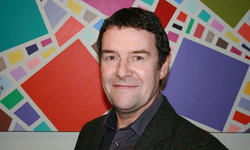08/27/2010
0 Comments How do people know you are paying attention? What do you look like when paying attention? How do you feel when you pay attention? All too often, students with ADD and ADHD can’t answer these questions.
In order to really get control of their ability to devote the right amount of attention to a task at the right time, students must understand how their body looks and feels when they pay attention.
The following role playing activity can encourage students’ insights by drawing their attention to the body language that illustrates strong listening.
Have your child play the role of the speaker, reading two or three paragraphs from a book or article. The parent will take the role of the listener. As you listen to what your child is reading, talk about the behaviors that show you are listening (see below for a list), and use a digital recorder to record your observations.
Play the recorder for your child and model each behavior again as it is mentioned on the recording. Draw your child’s attention to each aspect of your behavior that illustrates you are paying attention.
Now it’s time to change roles. You are the speaker and your child is the listener. Play the recorder and ask your child to demonstrate the behaviors he hears on the recording. Practice until your child shows he understands and can model the correct behaviors.
Make a list of attentive behaviors and post in your child’s room to refer to during homework and put a copy in the front of every notebook or binder.
How does attentive behavior look to others? The following signs of good attention are easy to demonstrate and observe:
- Eyes focused on the speaker and/or the visual material (such as textbook, board, etc.)
- Sitting upright, feet on floor, hands on desk or in lap
- Head level or tilted slightly to one side
- Response or reaction is “on topic” and appropriate to the context (e.g., taking notes during note taking sessions)
- Physical activity (hands or body) assists understanding (many students with ADHD use note-taking or doodling to increase attentiveness rather than keeping their hands and body completely still)


 RSS Feed
RSS Feed